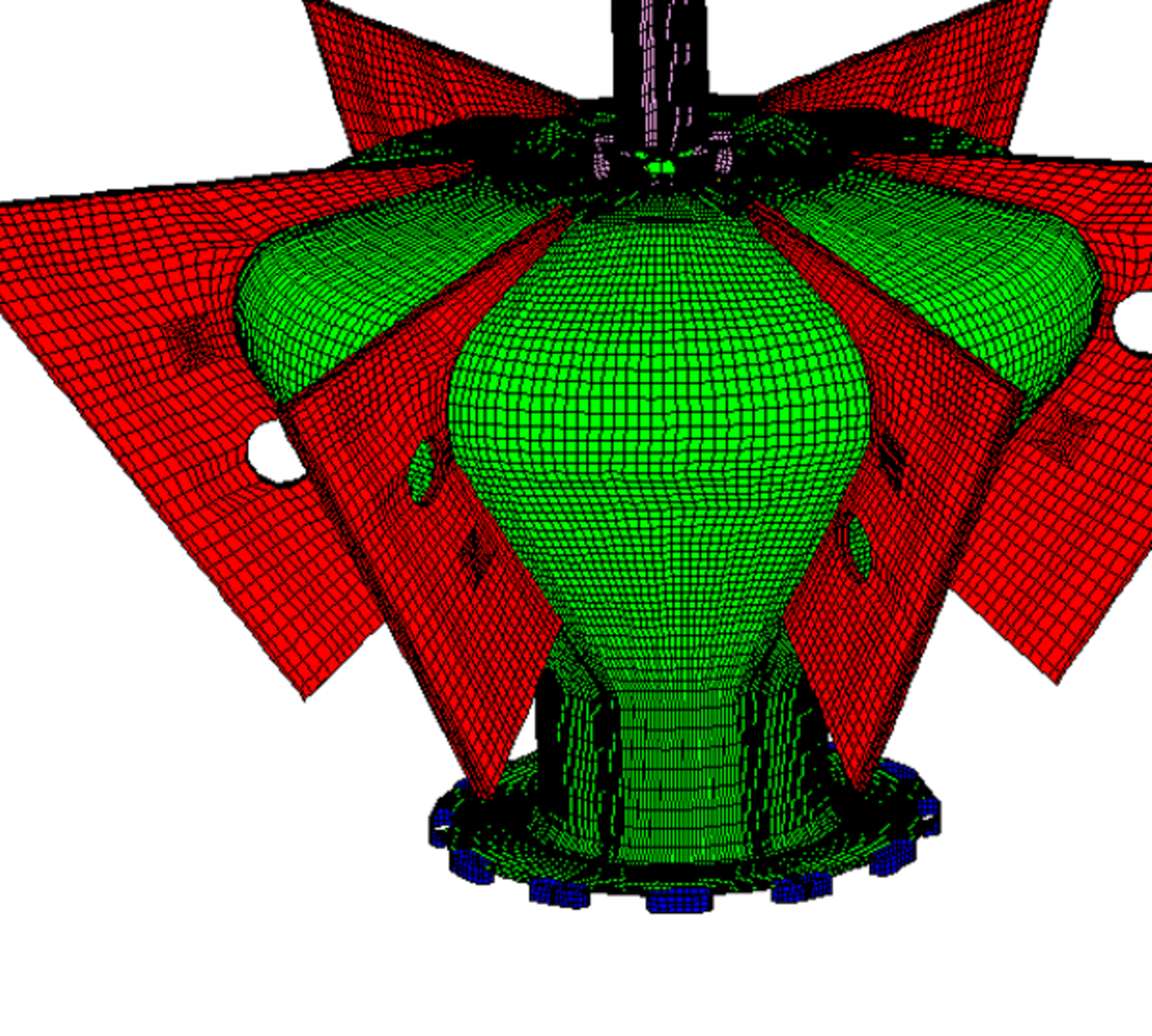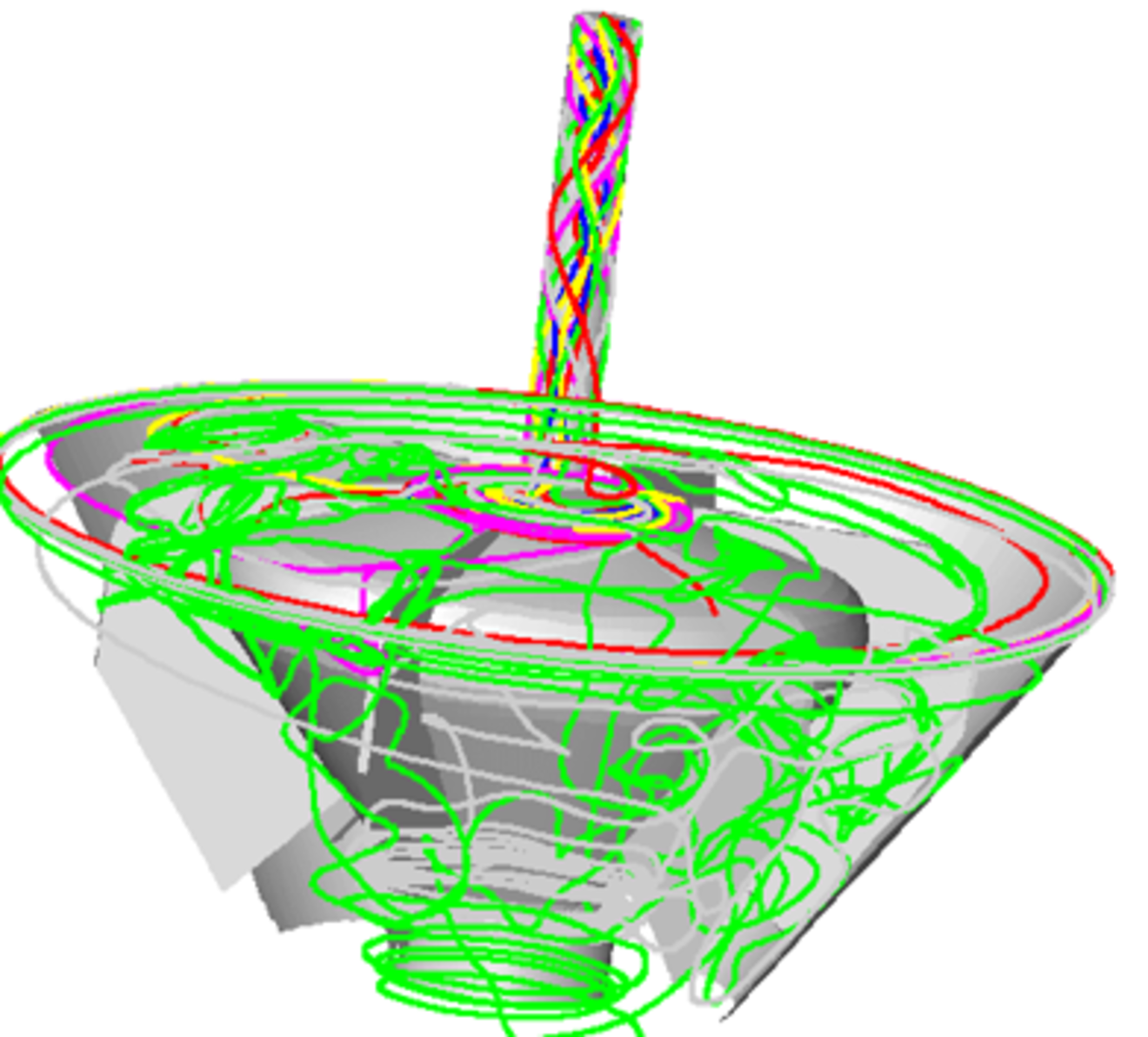Particle flow in centrifuge


Introduction
Centrifuges are used to separate mixed substances from each other. These can be dust particles or liquid droplets in a gas, suspensions, emulsions or even mixtures of gases or liquids.
Centrifuges make use of centrifugal force, which causes heavier particles in the gas or in a liquid to migrate outward, similar to the way a stone sinks to the bottom due to its higher density in water. On the outside, they can then be selectively separated.
In contrast to the cyclone, where the medium (gas, liquid) is set in rotation, in centrifuges either the container or the stirrer rotates.
Task / Calculation
In this case, the agitator and the flow in a centrifuge were to be optimized with the aid of flow simulation at the beginning of the 2000s.
The goal in this case was that particles in a fluid should be centrifuged out as quickly as possible, while the drive power should be as low as possible.
In the case of particles in a fluid, the procedure depends on whether the particles change the flow (large stones in a river bed) or whether the particles are comparatively small and only subject to gravity.
In the example below, the latter was the case.
The task is solved computationally by calculating the flow field without particles and then introducing discrete mass particles of a certain size, on which flow forces and acceleration forces act.
These particle trajectories can now be analyzed for different particle sizes with respect to residence time and trajectory and used for optimization.
Results
In our example, the efficiency could be increased by changing the blade geometry so that a reliable mode of action could be ensured for all particle sizes occurring.
Current status
In the meantime, the possibilities have expanded considerably compared to back then. Starting with today's somewhat eerie-looking meshes and graphics and the nevertheless limited physics, nowadays there are no limits to multiphases, free surfaces and the observation of real particles with the most complex geometry.
Often, e.g. in laboratory centrifuges, noise generation and acoustics also play an essential role, which can be considered.
Laboratory centrifuges, cyclones, oil separators, water separators, everywhere simulation is used to analyze a possible optimization potential. When separating liquid droplets, effects such as droplet formation and film formation on the walls also play a role. The subject then becomes arbitrarily complex, and mapping a test rig for oil separation on an engine over a period of several hours still leads to extremely long computing times.
Merkle & Partner is very familiar with all the issues involved.
Keywords
- Separator
- Separator behavior
- Acoustics
- Emulsion
- Solids separation
- Gas separation
- Laboratory centrifuge
- Noise
- Mass force separator
- Oil separation
- Particle
- Flow simulation
- Suspension
- Separation
- Agitator
- Water separation
- Centrifugal force
- Centrifuge
- Cyclone
Mit freundlicher Genehmigung der HKS Technology GmbH, Singen

